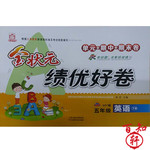题目内容
5.Americans ail know the old proverb, " Waste not,want not. " This means if you use what you have carefully, you . (lack)
美国人都知道一句古老的谚语:"俭以防匮"。意思是说,如对使用自己的东西精打细算,就什么也不会缺。
5.will never lack anything / will lack nothing

练习册系列答案
 好成绩1加1期末冲刺100分系列答案
好成绩1加1期末冲刺100分系列答案 金状元绩优好卷系列答案
金状元绩优好卷系列答案
相关题目